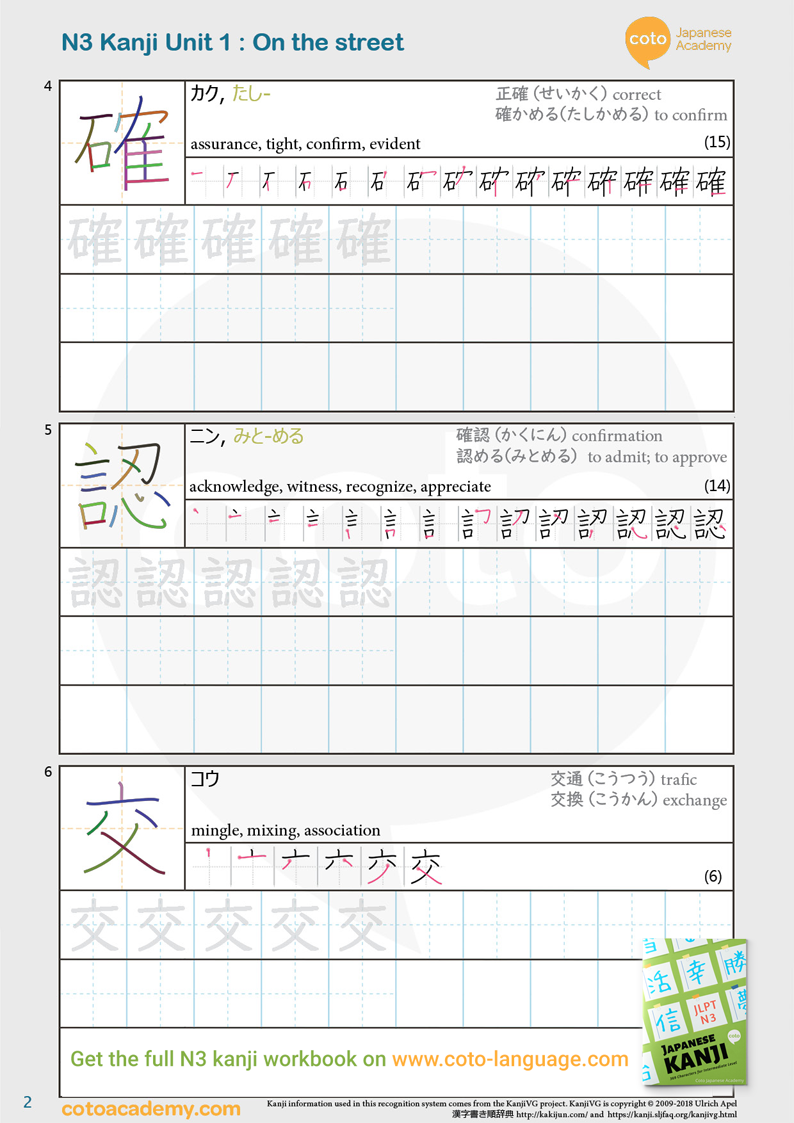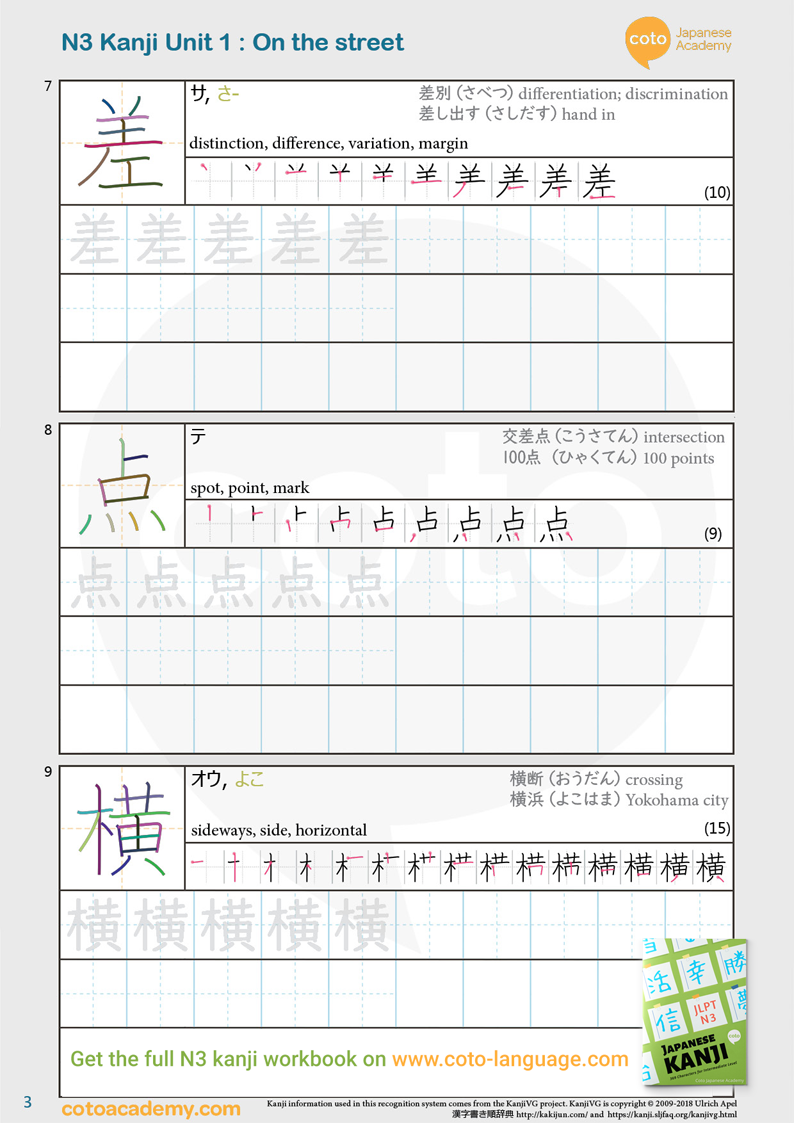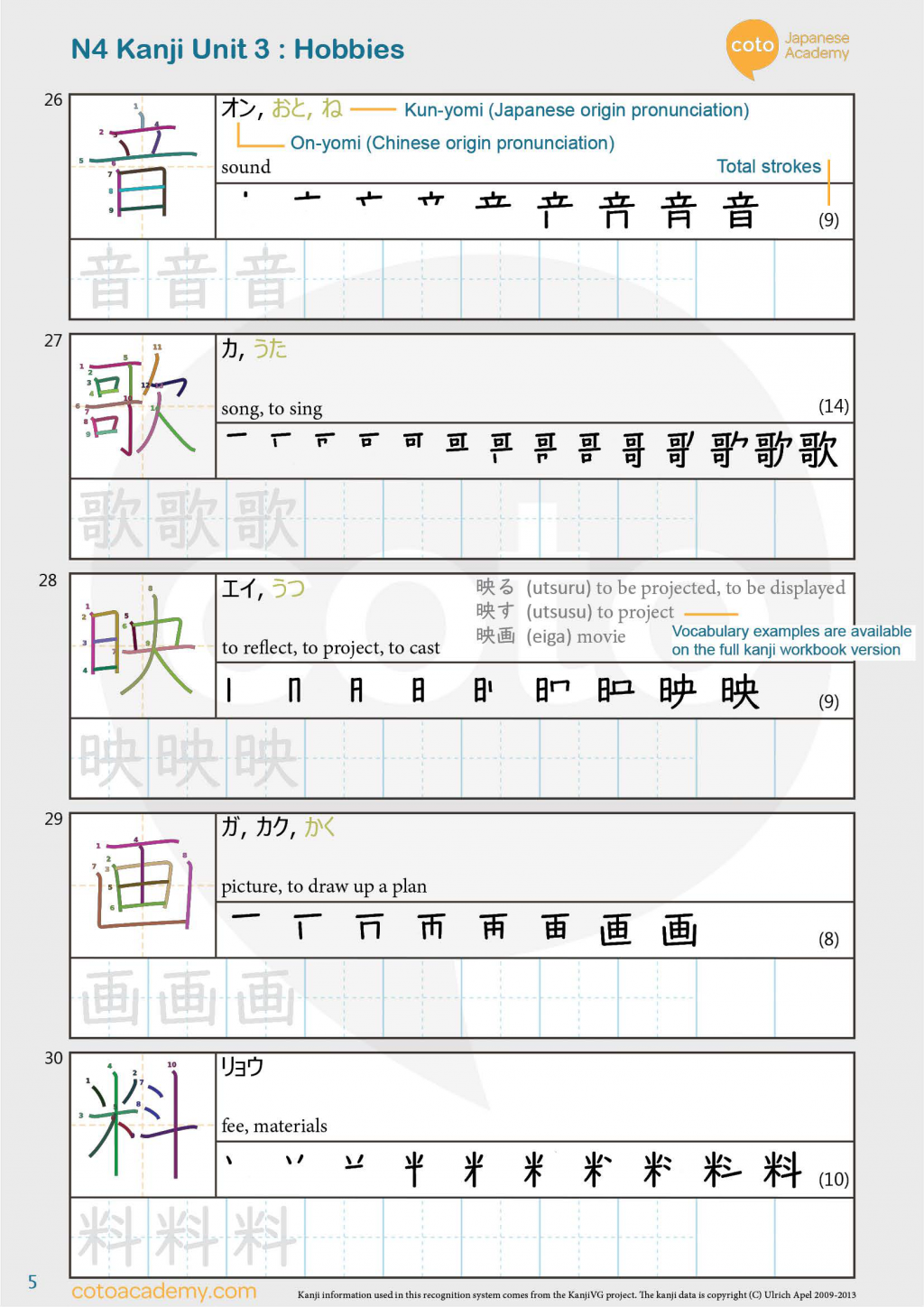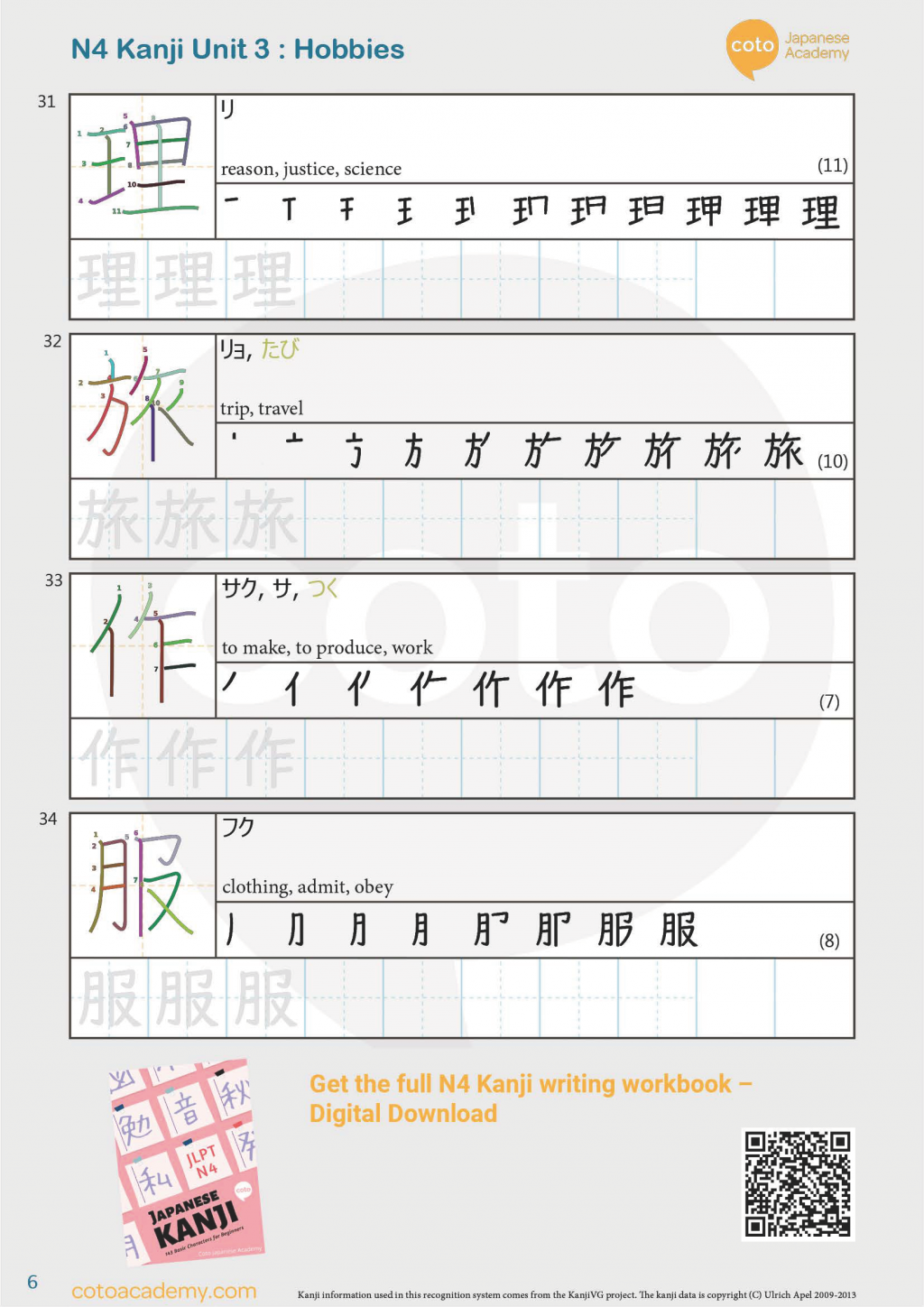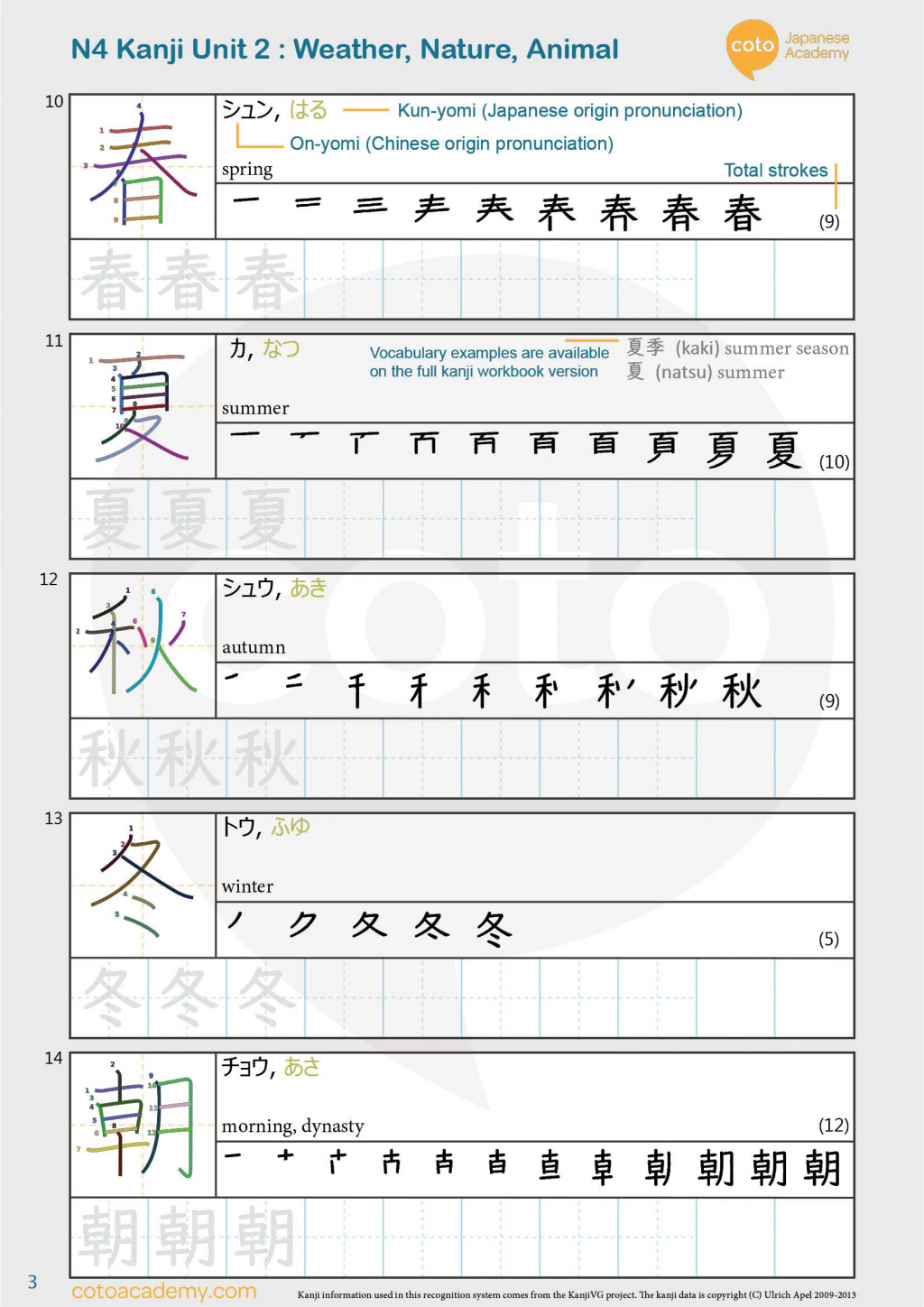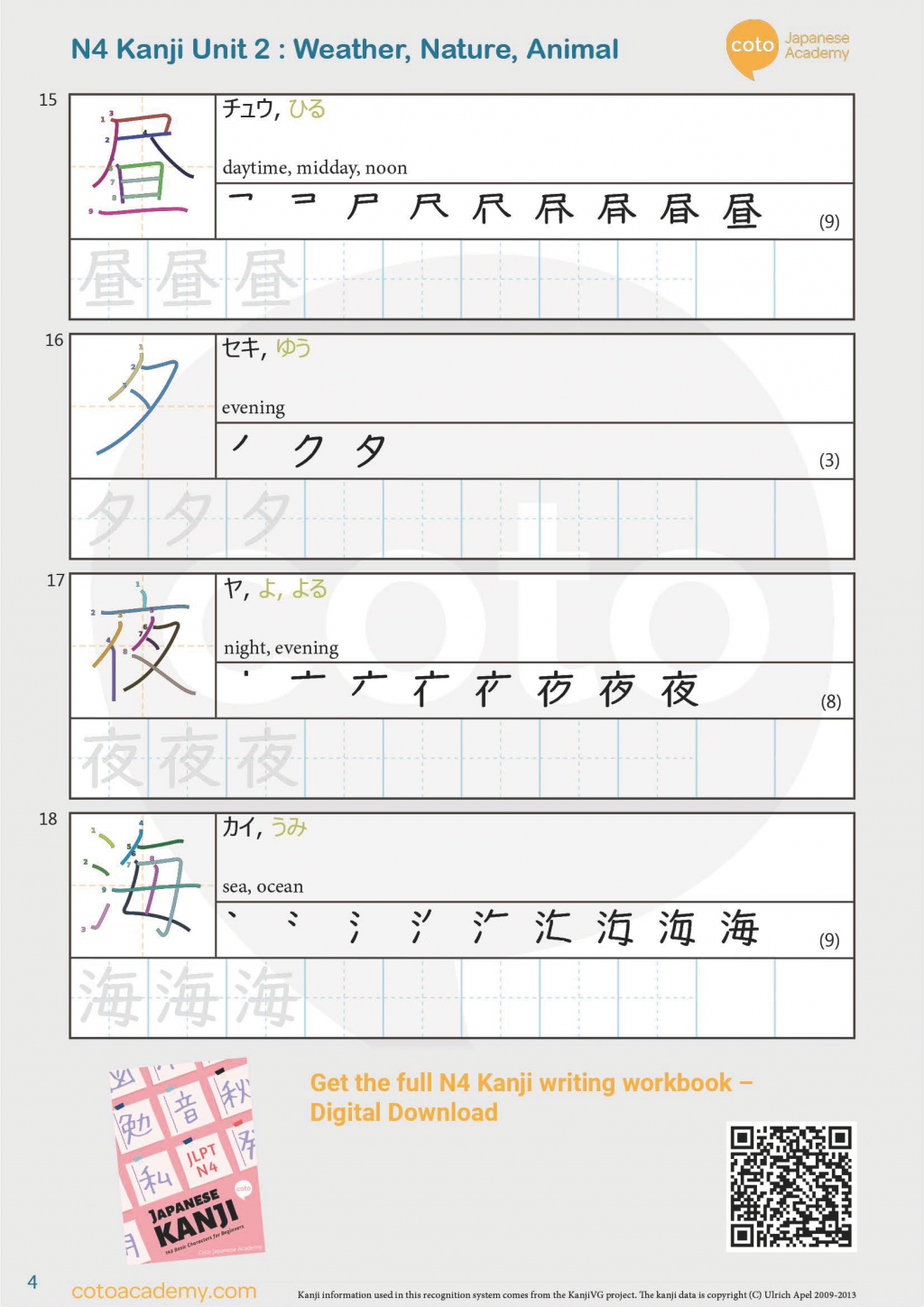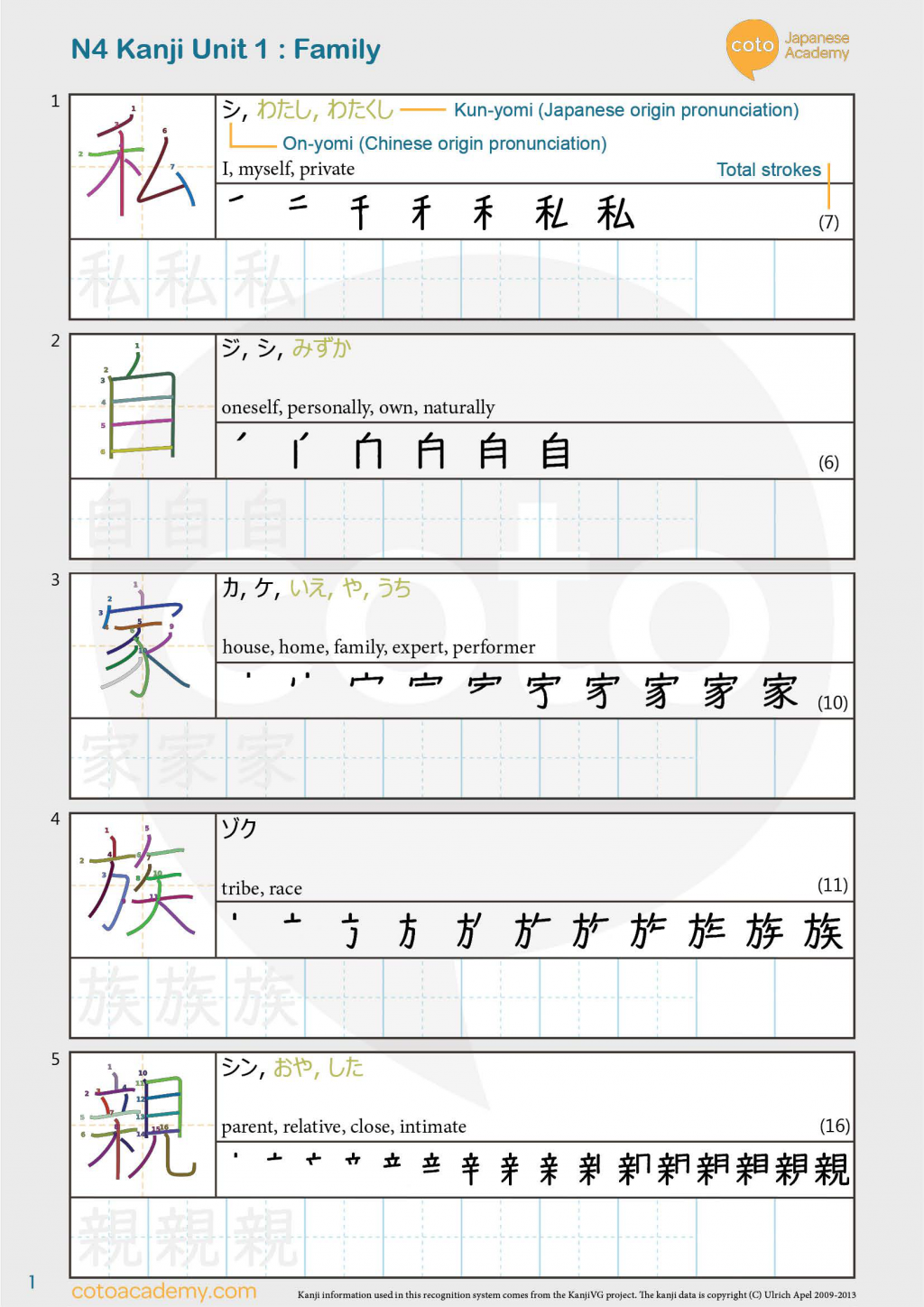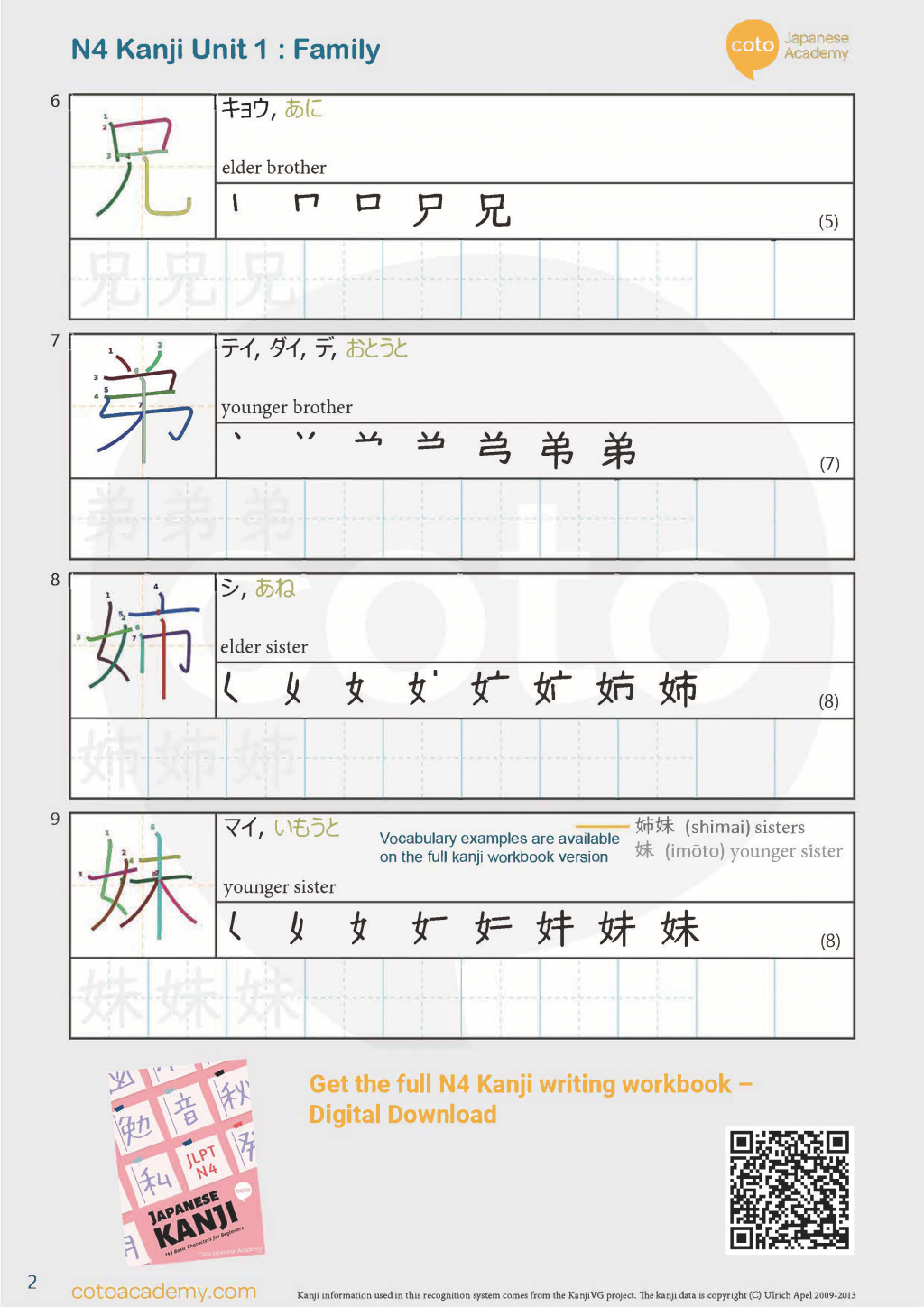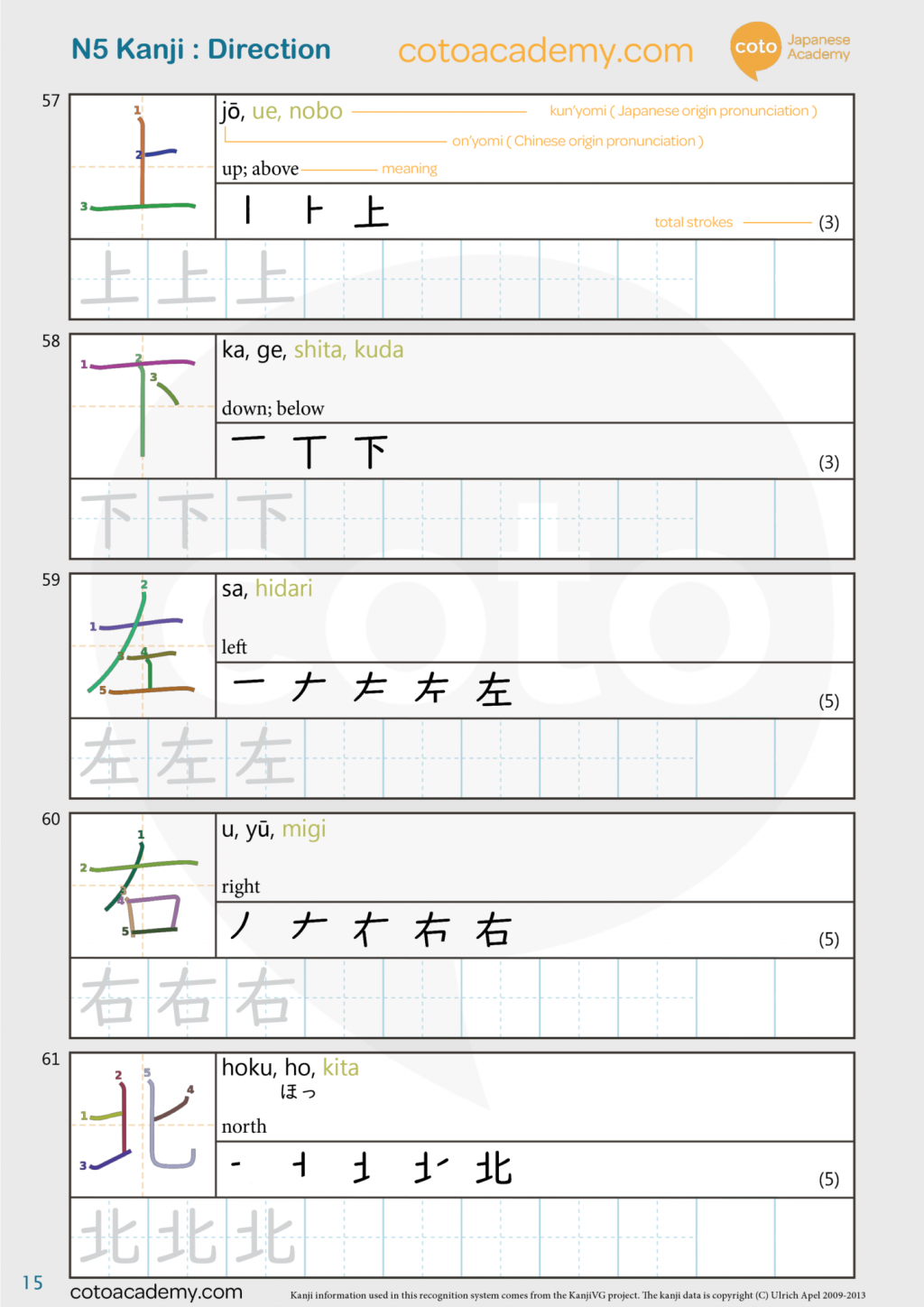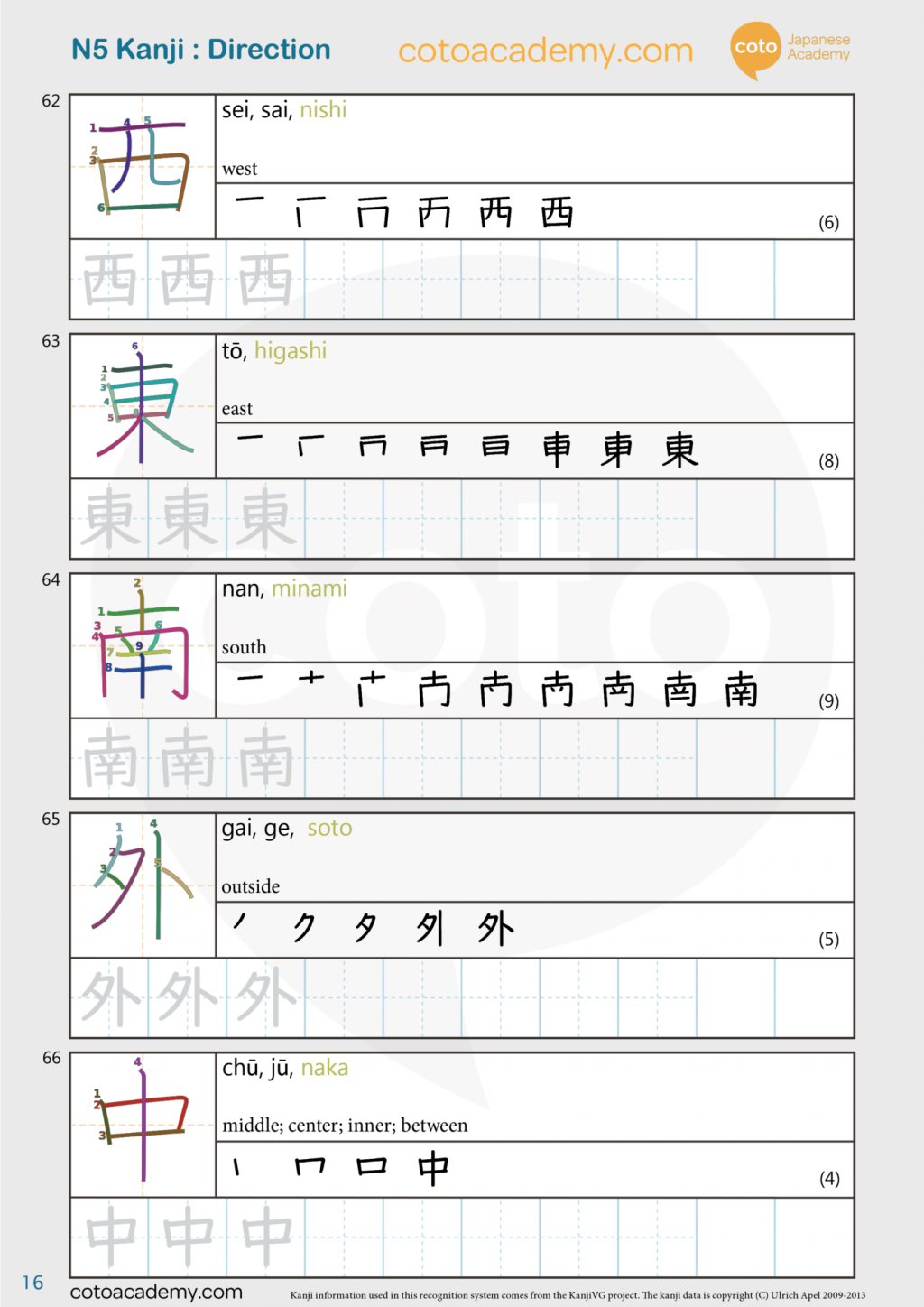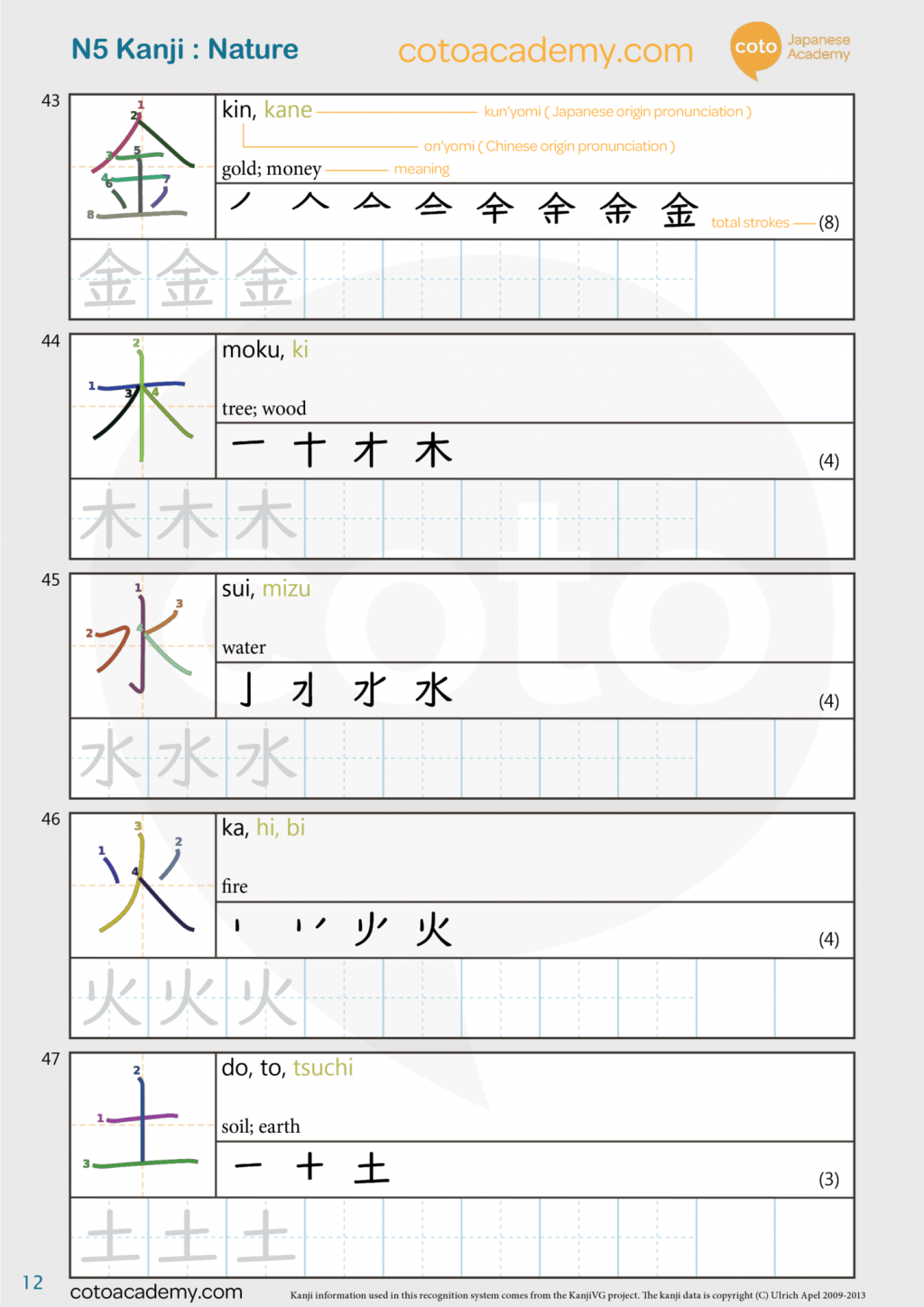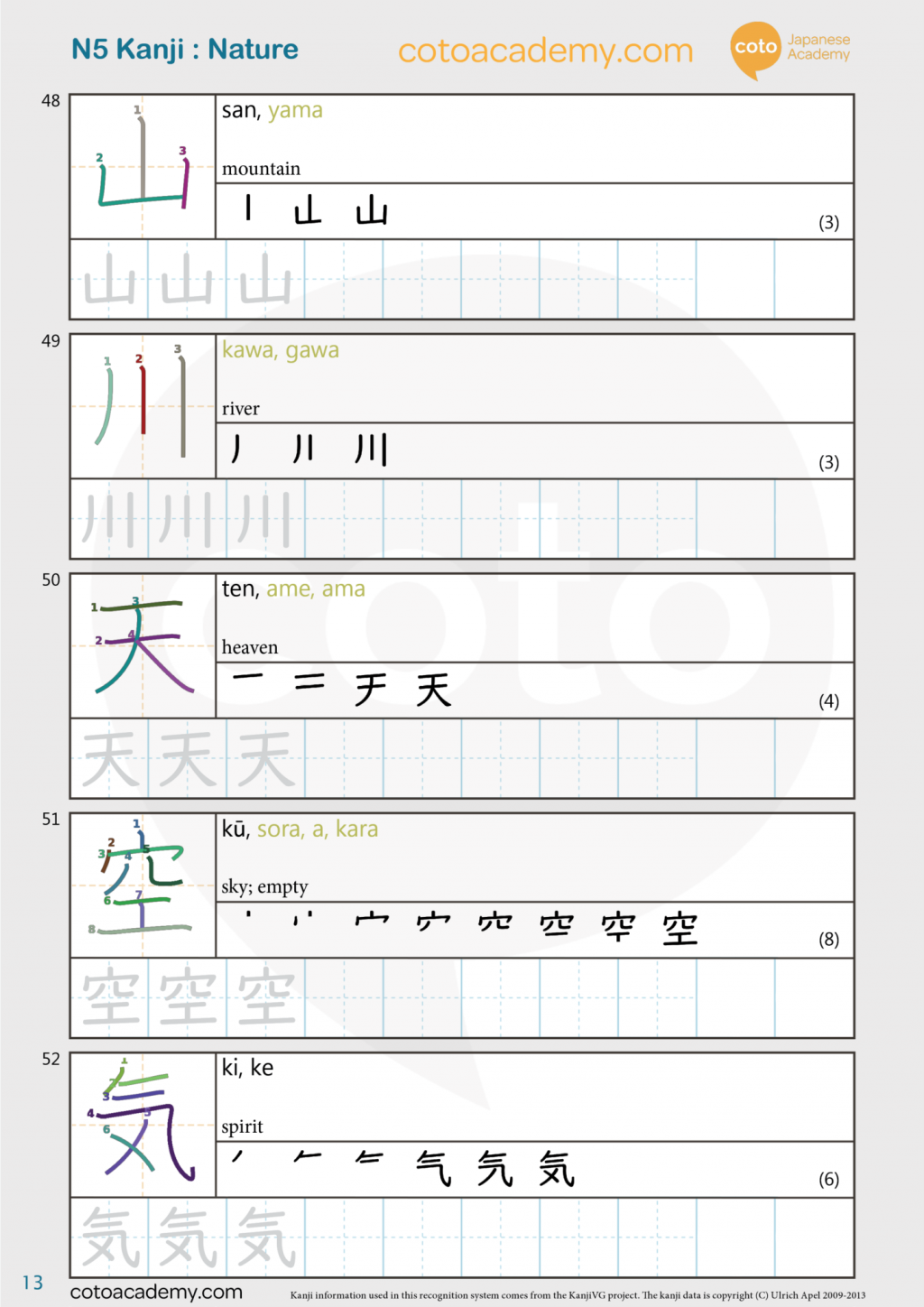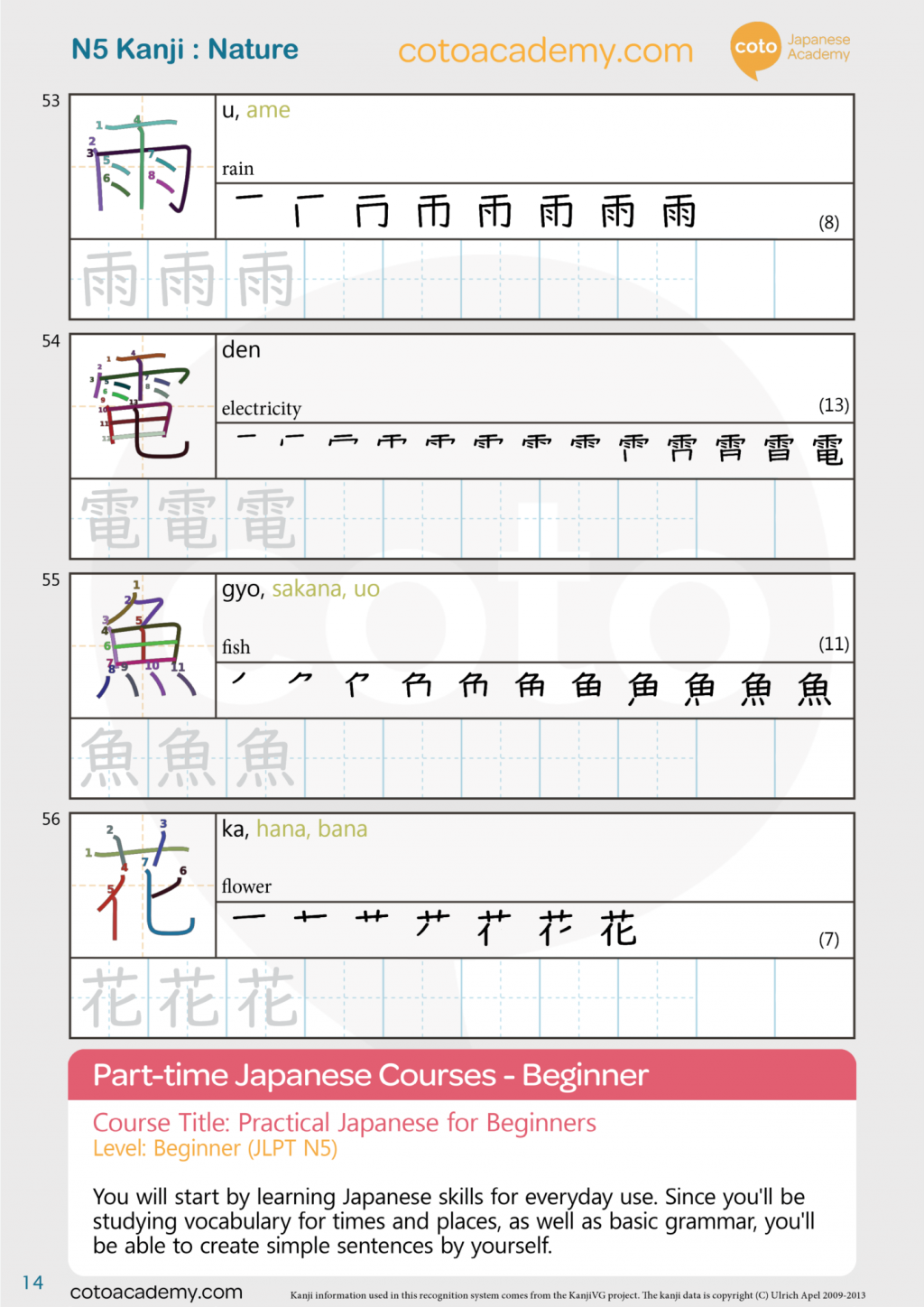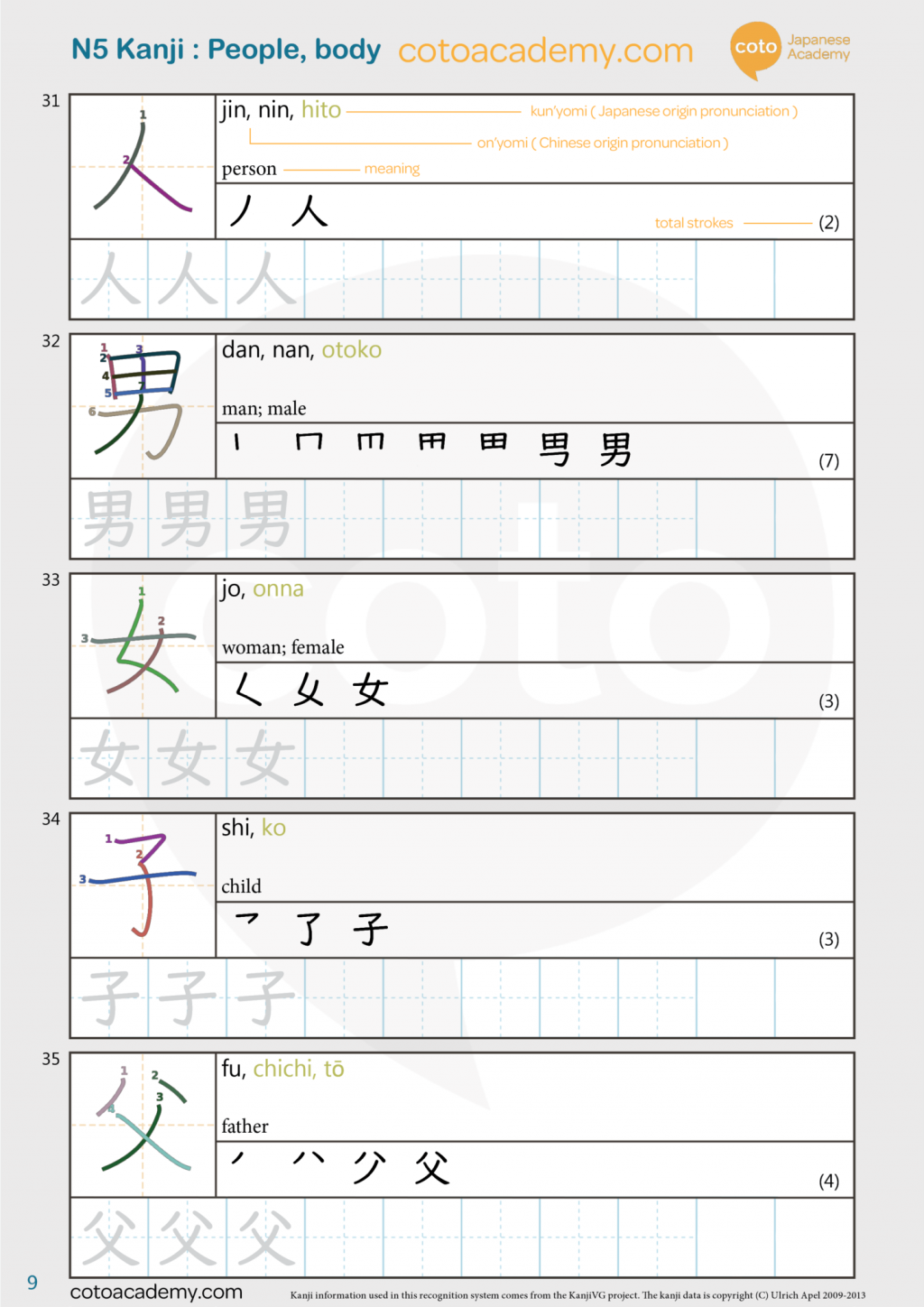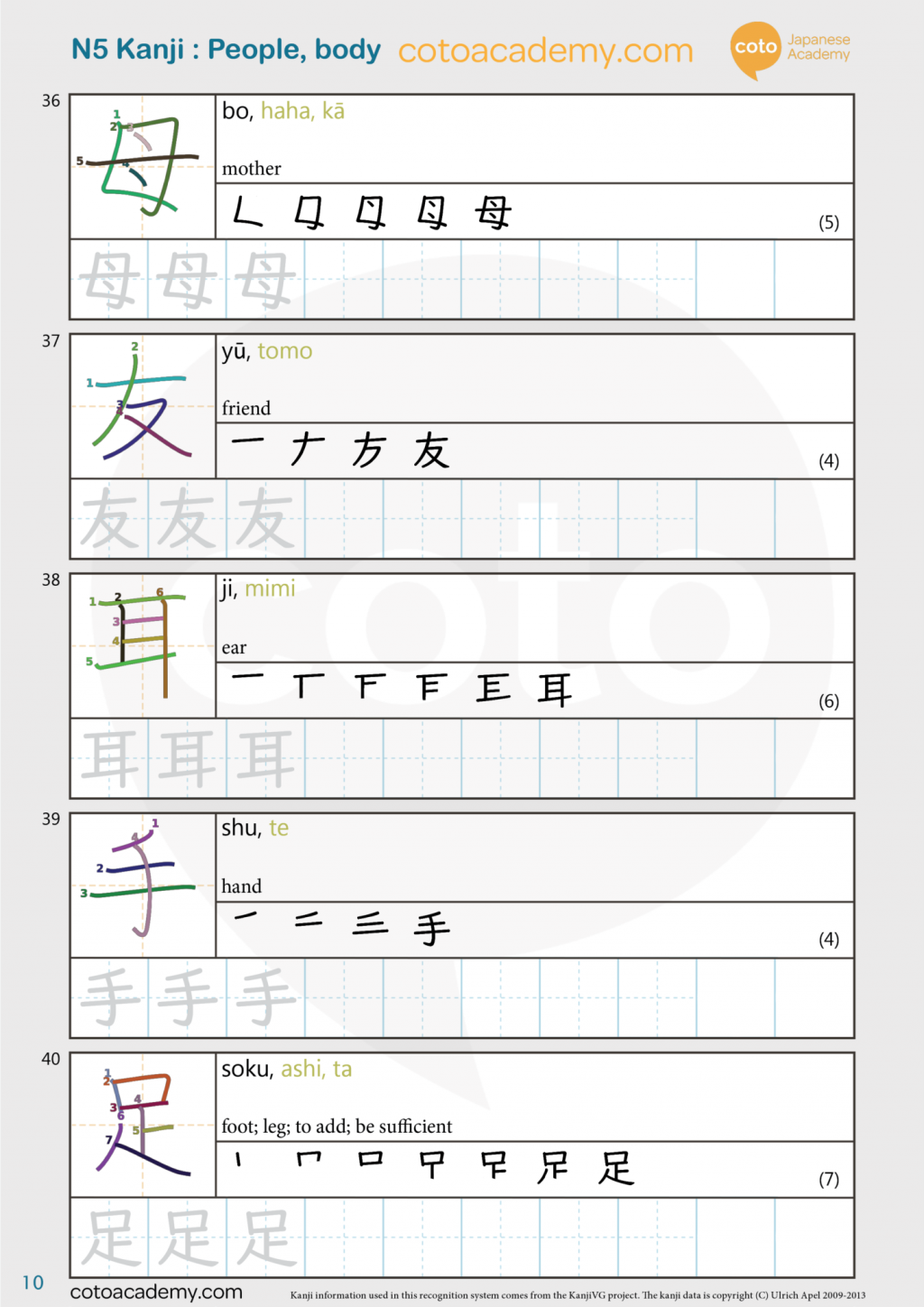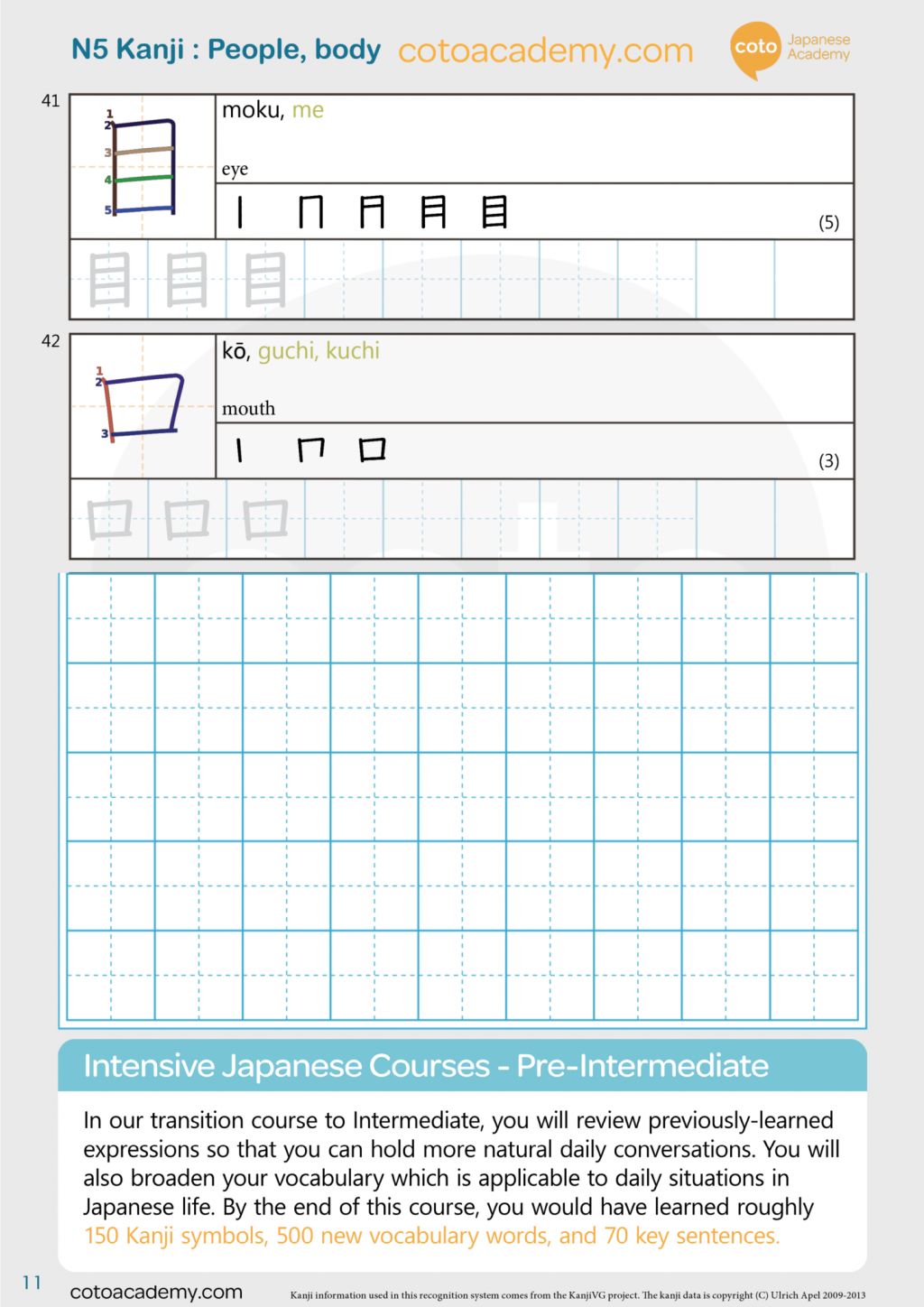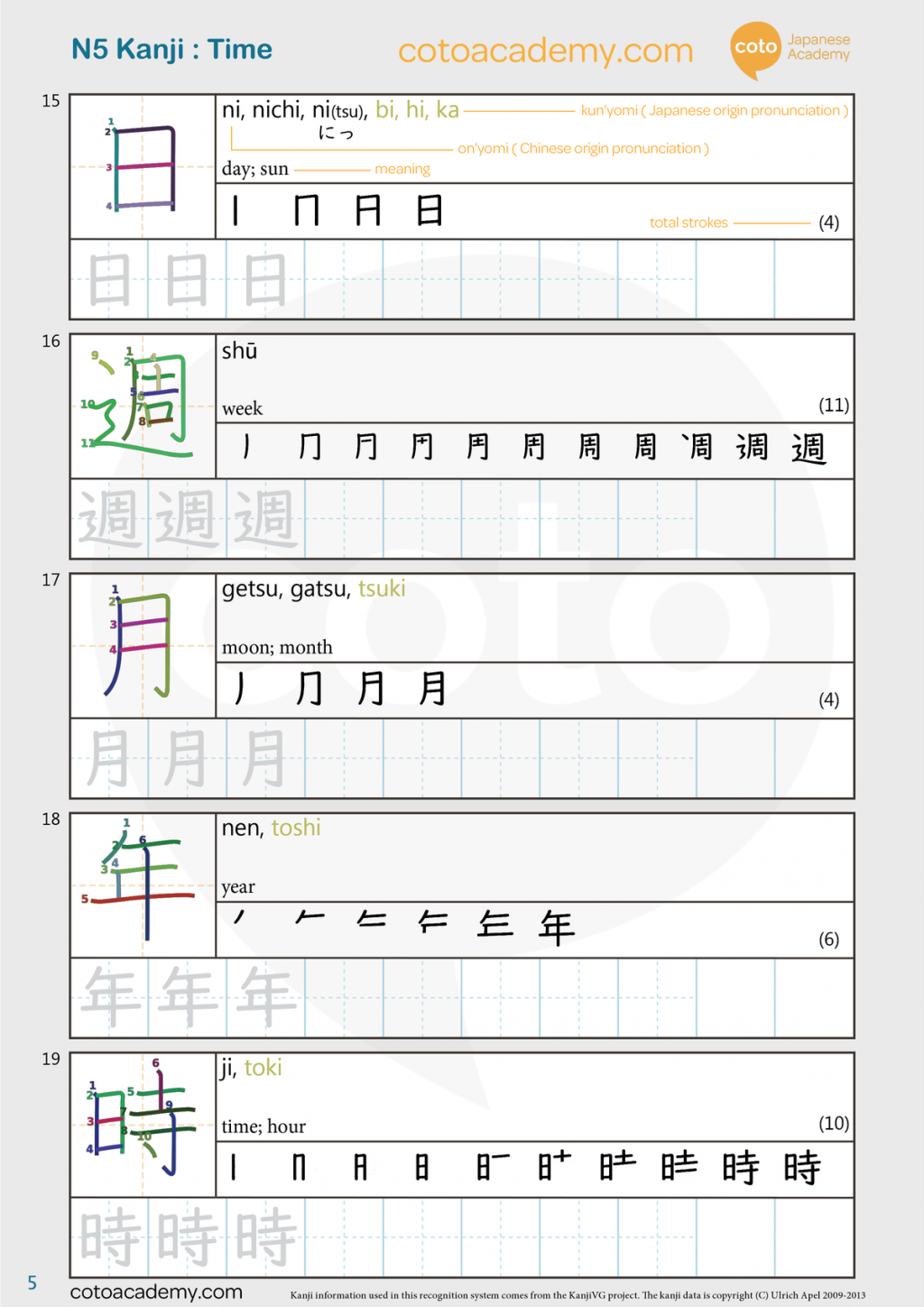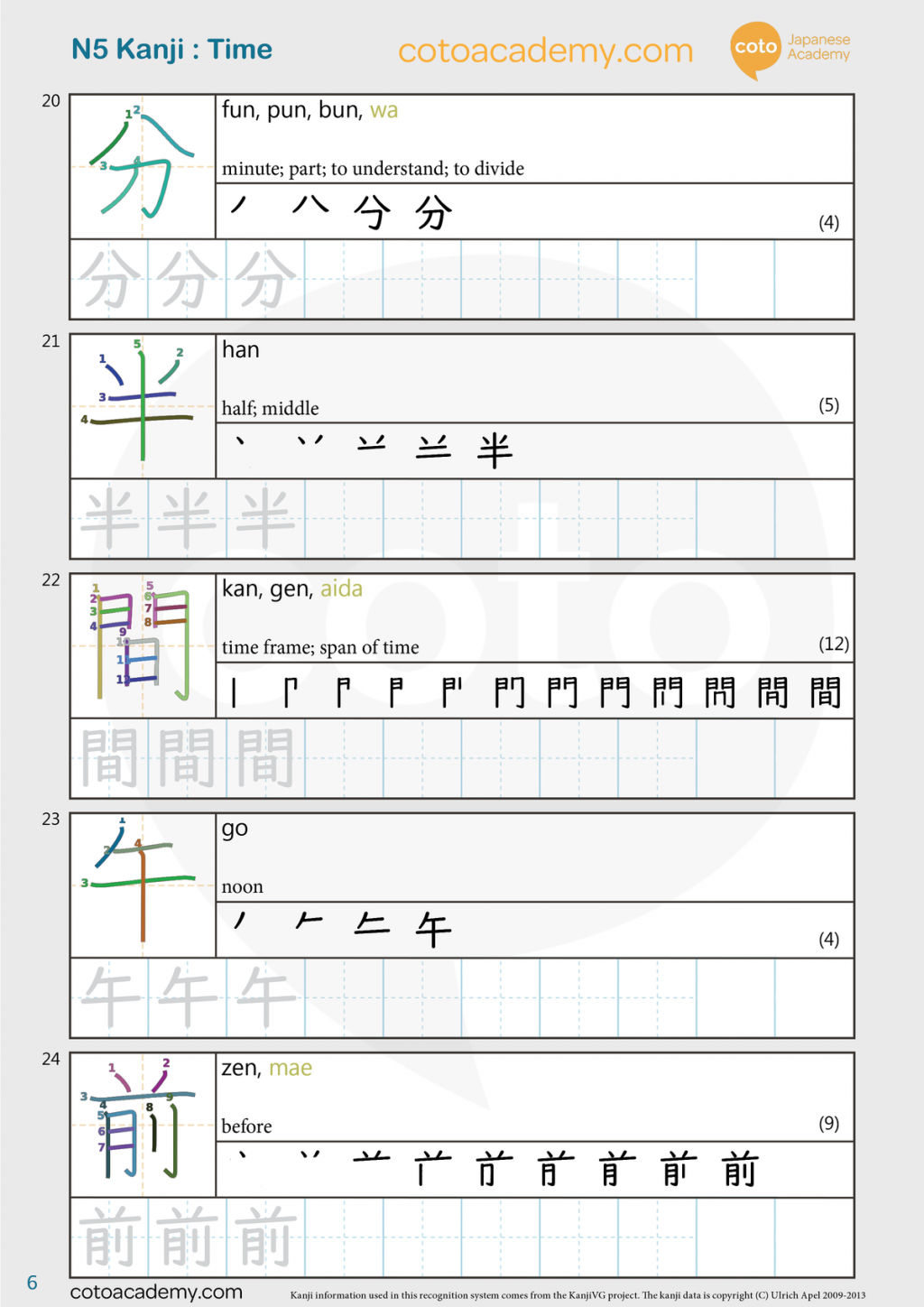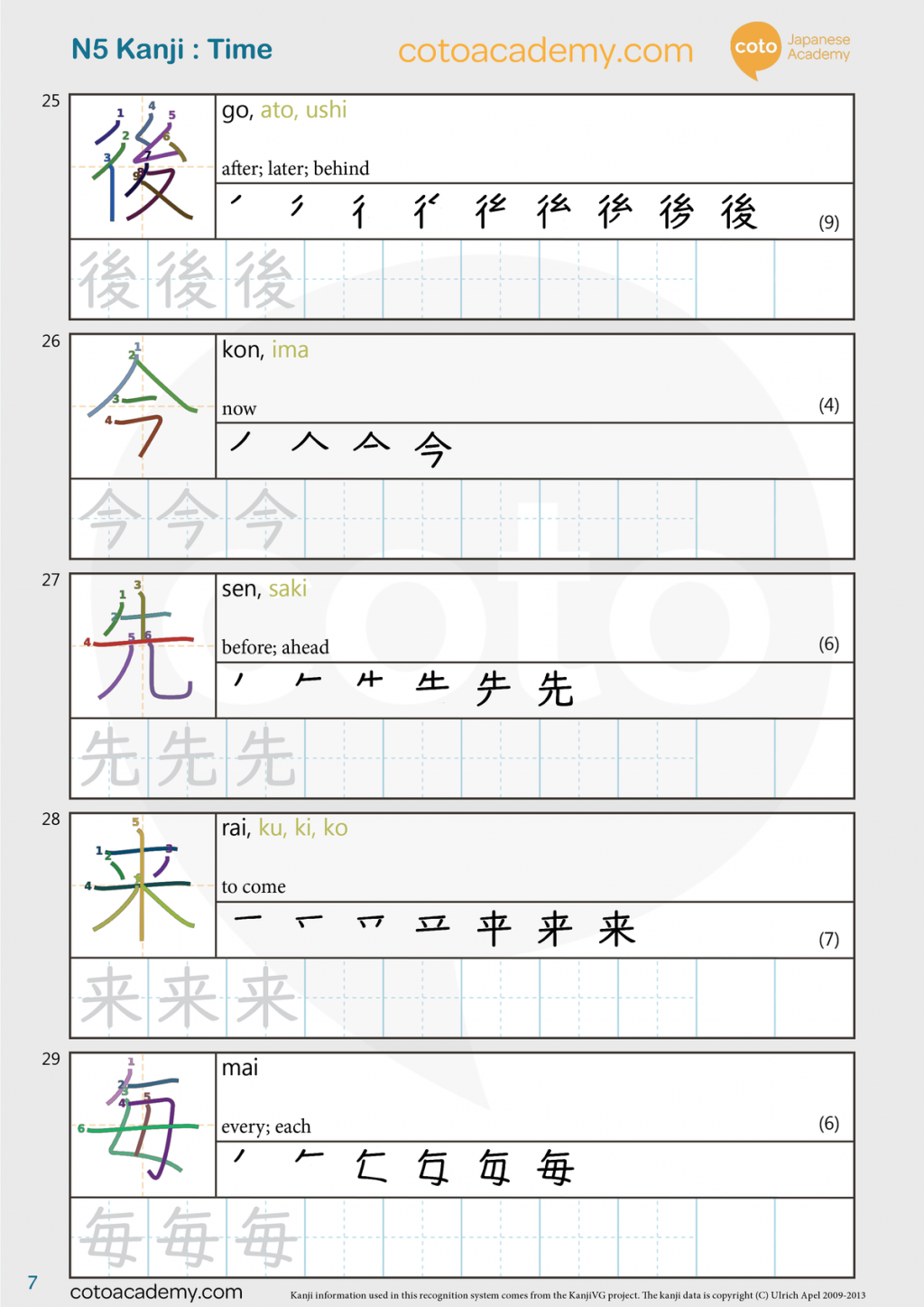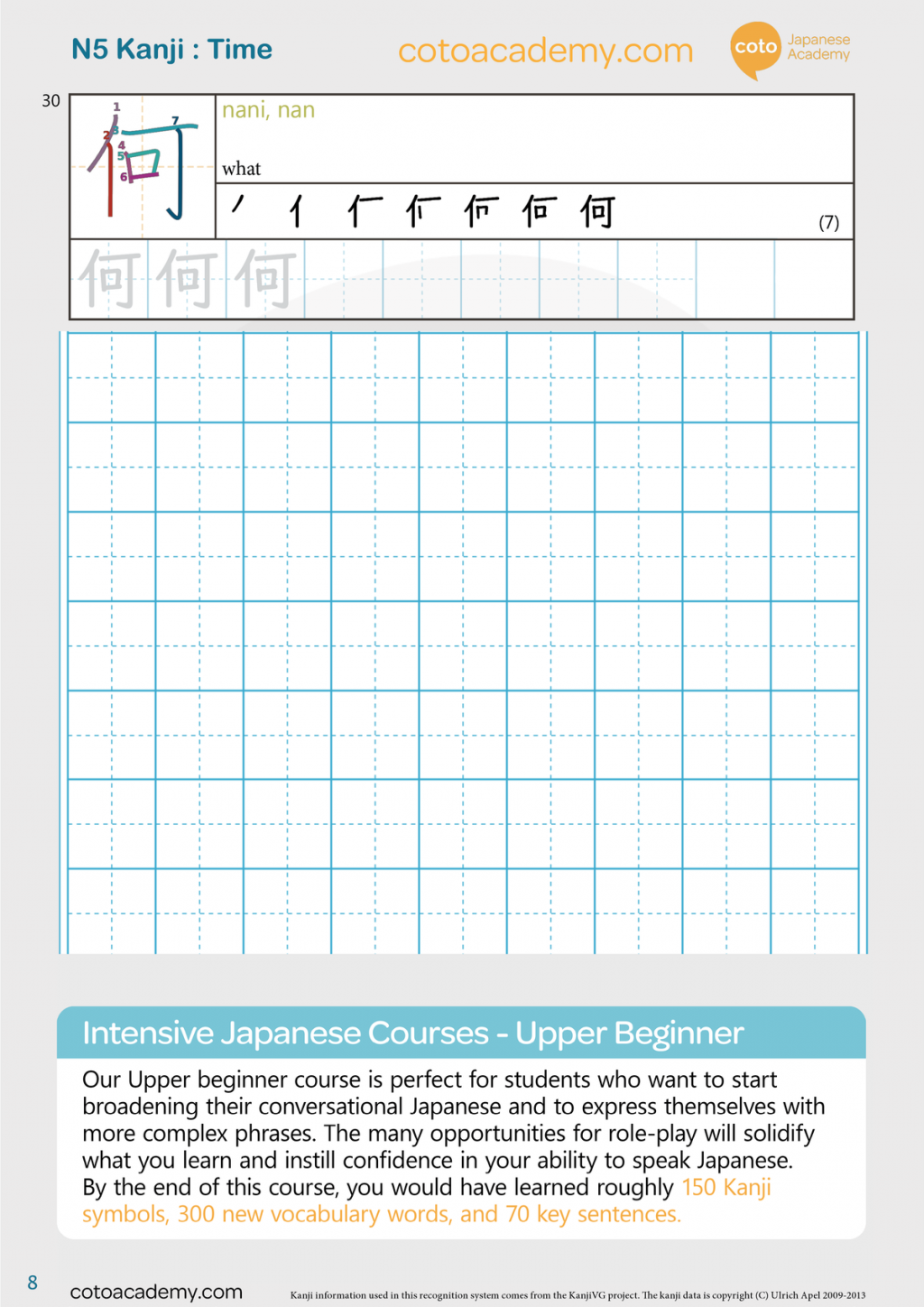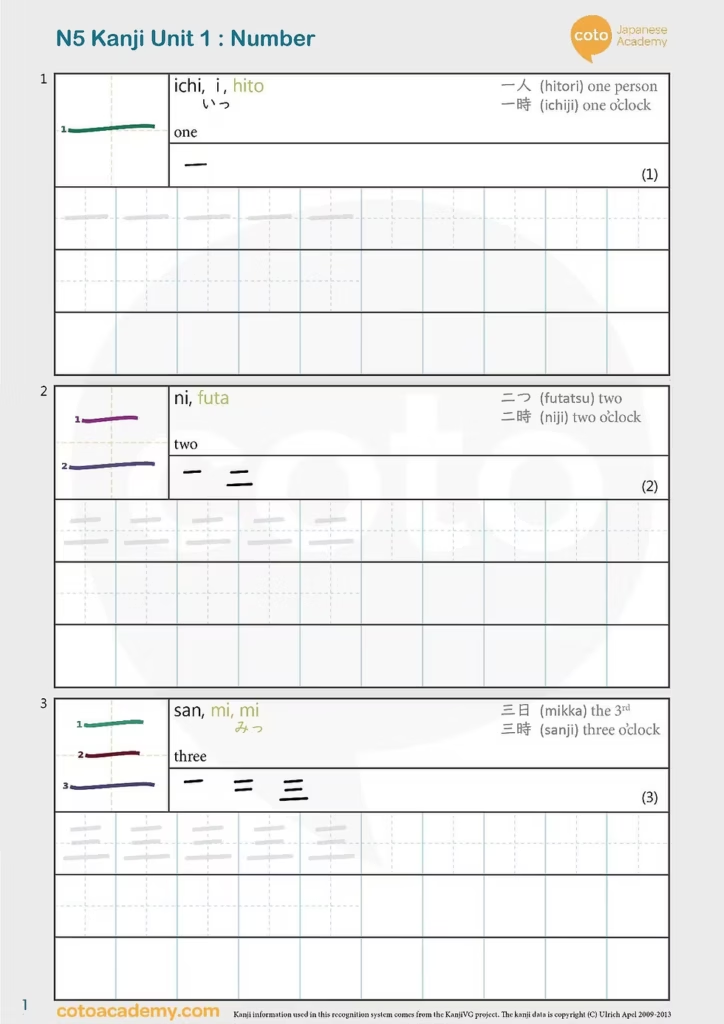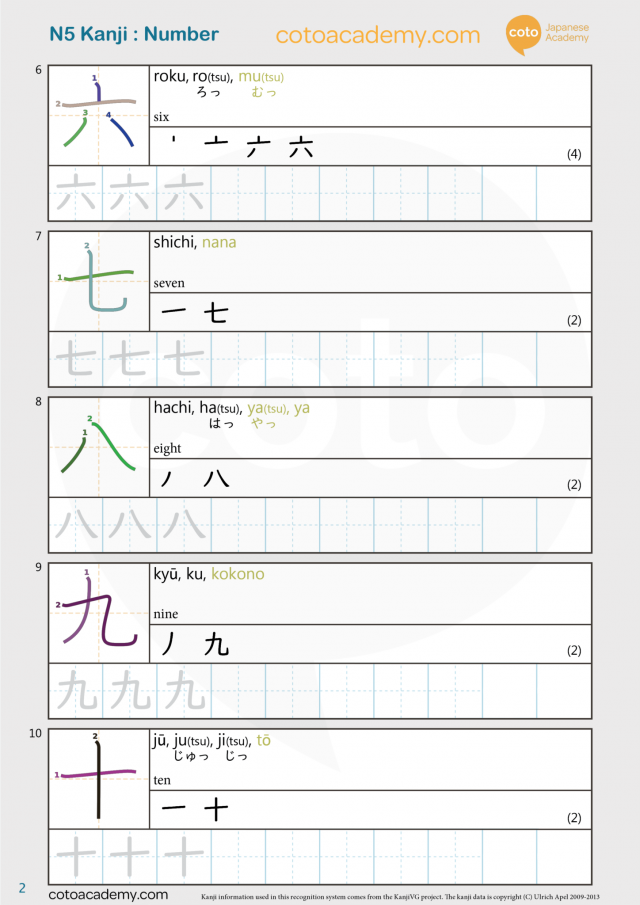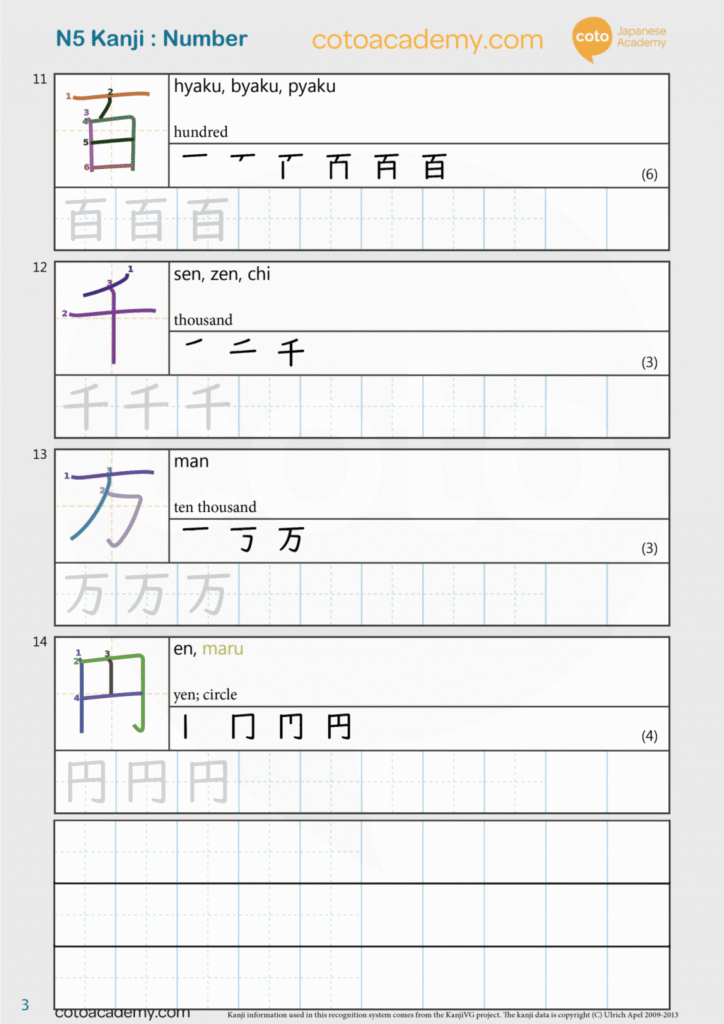What is the 日本漢字能力検定?
日本漢字能力検定(Nihon kanjinouryoku kentei), usually knowns as 漢検(Kanken) or the Kanji Kentei, is a test that examines the candidate’s kanji skill. It tests on the candidate’s reading and writing ability of kanji as well as the ability to understand and use them in different contexts. Like the JLPT, it is another good proof of your Japanese knowledge and is useful when applying for jobs in Japan.
Although anyone can sit for Kanken, it is challenging for foreign Japanese learners.
As such, if you are a foreigner looking for jobs in Japan, acquiring a Kanken certificate will make you stand out from your competitors.
How Difficult is Kanken?
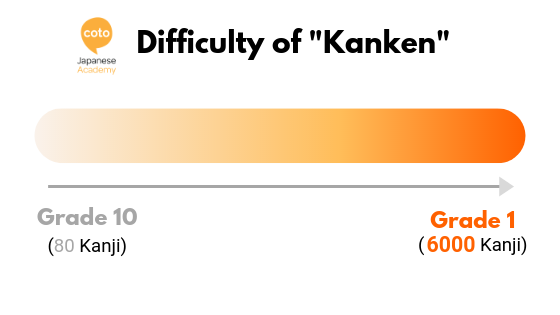
There are in total of 12 levels of Kanken, Grade 10 being the easiest and grade 1 being the hardest. Each level is set for different educational levels starting from primary 1. The requirements and scope of each level are as follows.
Grade 10 – Grade 7
Grade 6 – Grade 3
Grade 2 – Grade 1

Grade 10 (Primary 1 level)Detailed Areas of Focus:Reading & Writing –Ability to read and write kanjis from the first year of the小学校学年別漢字配当表 (list of Kanji by school year).
Stroke Order – length of points and strokes. Joints and intersections, stroke order and number of strokes.

Grade 9 (Primary 2 level)
Detailed Areas of Focus:
Reading & Writing- able to read and write kanji from the second year of the学年別漢字配当表 (list of Kanji by school year).
Stroke order – Aware of Length of points and strokes, Joints and intersections; stroke order and number of strokes.

Grade 8 (Primary 3 level)
Detailed Areas of Focus:
Reading & Writing – able to read and write kanjis from the 3rd year of the学年別漢字配当表 (list of Kanji by school year).
- Understand onyomi and kunyomi
- Write correct kana endings
- Roughly understand the concept of antonyms
- Roughly understand the concept of homonyms
Stroke Order – know correct stroke orders and number of strokes.
Radicals – able to recognize and understand basic radicals.

Grade 7(Primary 4 level)Detailed Areas of FocusReading and Writing -Able to read and write kanjis from the fourth year of the学年別漢字配当表 (list of Kanji by school year).
- Understand onyomi and kunyomi
- Write correct kana endings
- Roughly understand the concept of antonyms
- Roughly understand the concept of homonyms
- Know about the fundamental composition of Japanese idioms
Stroke order- know correct stroke orders and number of strokes.
Radicals- able to recognize and understand radicals.

Grade 6 (Primary 5 level)
Detailed Areas of Focus:Reading& Writing: Able to read and write kanjis from up to the fifth year of the小学校学年別漢字配当表 (list of Kanji by school year).
- Understand onyomi and kunyomi
- Write correct kana endings and careful with the correct usage of kana
- Know about the structure of idioms
- understand the concept of antonyms and synonyms
- understand the concept of homonyms
Stroke order -know correct stroke order and number of strokes.
Radicals – able to recognize and understand radicals.

Grade 5 (Primary 6 level)Detailed Areas of Focus:Reading and writing: – Able to read and write kanjis from up to the sixth year of the小学校学年別漢字配当表 (list of Kanji by school year).
- Understand onyomi and kunyomi
- Write correct kana endings and careful with the proper use of kana
- Know about the composition of idioms
- understand antonyms, synonyms, and homonyms
Idioms – understand four-character idiomatic phrases
Stroke order – know the correct stroke order total number of strokes.
Radicals – able to understand and recognize radicals.

Grade 4 (Secondary school level)Detailed Areas of FocusReading & Writing – Able to read and write all kanjis in the 小学校学年別漢字配当表 (list of kanji by school year) as well as about 300 frequently used kanji. Able to use them in a passage appropriately.
- Understand onyomi and kunyomi
- Write correct kana endings and careful with the proper use of kana
- Understand the composition of idioms
- understand antonyms, synonyms, and homonyms
- Understand the concept of 熟語訓 (special kanji readings) and 当て字 (phonetic equivalents)
Idioms – able to understand the meaning of four-character idiomatic phrases.
Radicals – able to recognize the radicals and understand their meanings.

Grade 3 (Secondary school graduate level)Detailed Areas of Focus:
Reading & Writing – Able to read and write all kanjis in the 小学校学年別漢字配当表 (list of kanji by school year) as well as about 600 frequently used kanji. Able to use them in a passage appropriately.
- Understand onyomi and kunyomi
- Write correct kana endings and careful with the proper use of kana
- Understand the composition of idioms
- understand antonyms, synonyms, and homonyms
- Understand 熟語訓 (special kanji readings) and 当て字 (phonetic equivalents)
Idioms – able to understand 4-word idioms.
Radicals – able to recognize radicals and understand their meanings.
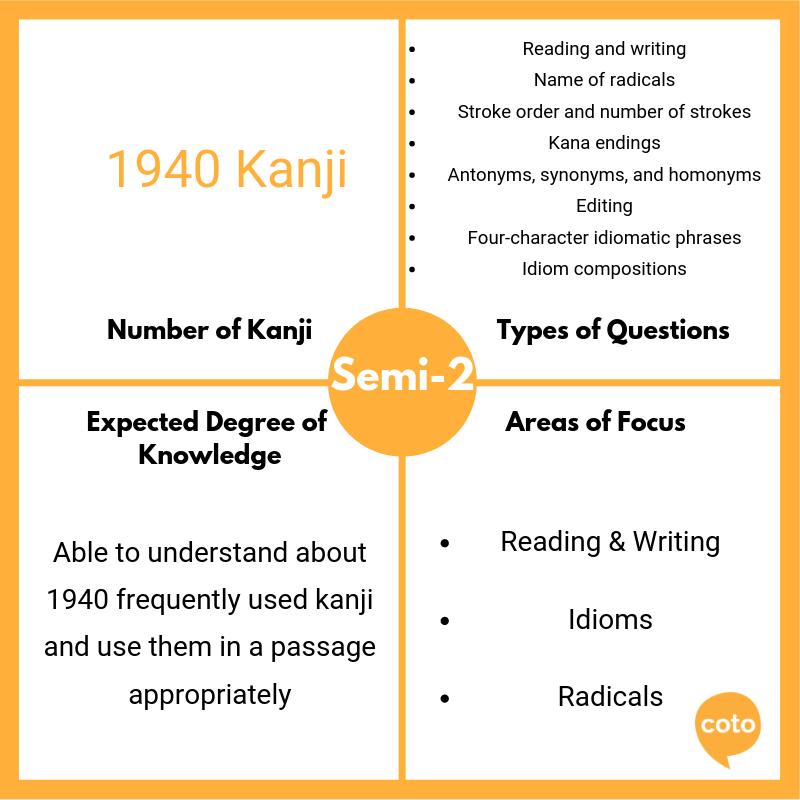 Grade Semi-2 (High school level)Number of Kanji
Grade Semi-2 (High school level)Number of Kanji: 1940
Detailed Areas of FocusReading & writing – able to read and write about 1940 frequently used Kanji and use them in a passage appropriately.
- Understand onyomi and kunyomi
- Write correct kana endings and careful with the proper use of kana
- Understand the composition of idioms
- Understand antonyms, synonyms, and homonyms
- Understand 熟語訓 (special kanji readings) and 当て字 (phonetic equivalents)
Idioms -understand 4-word idioms with traceable origins.
Radicals – able to recognize radicals and understand the meanings in terms of the composition of kanji.

Grade 2 (High school graduate/ university/ general public level)Detailed Areas of FocusReading & writing – Mastered the reading and writing of all frequently used Kanji and able to use them in a passage appropriately.
- Understand onyomi and kunyomi
- Write correct kana endings and careful with the proper use of kana
- Understand the composition of idioms
- Understand antonyms and synonyms
- Understand homonyms
- Understand 熟語訓 (special kanji readings) and 当て字 (phonetic equivalents)
Idioms – understand 4-word idioms with traceable origins.
Radicals: able to recognize radicals and understand the meanings in terms of the composition of kanji.
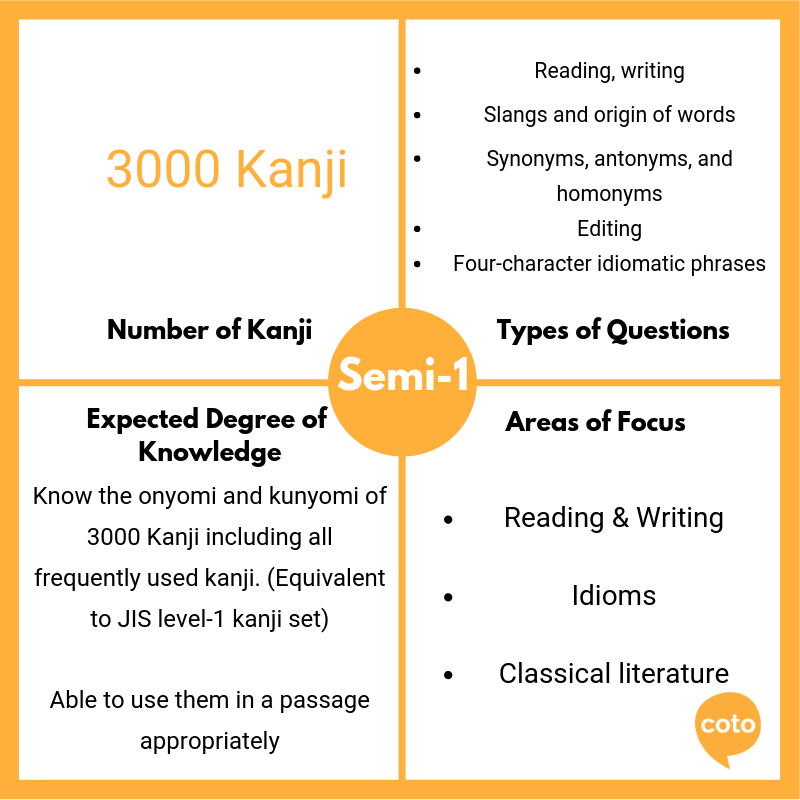
Grade Semi-1 (University/general public level)Detailed Areas of FocusReading and writing – mastered the reading and writing of the 3000 kanji and able to use them appropriately in a passage.
- Understand 熟語訓 (special kanji readings) and 当て字 (phonetic equivalents)
- Understand anonyms, synonyms, and homonyms
- Understand 国字 (Japanese-made Chinese Characters)
- Understand Kanji used to represent locations/nations (this is a type of 当て字)
- Understand multiple Kanji Labels. (multiple kanji used to indicate the same meaning interchangeably e.g. 国 and 國)
Idioms -able to understand four-character idiomatic compounds, Proverbs, and 故事成語 (idioms derived from historical stories).
Classical literature – able to understand kanji, Chinese characters from Japanese and Chinese literature.
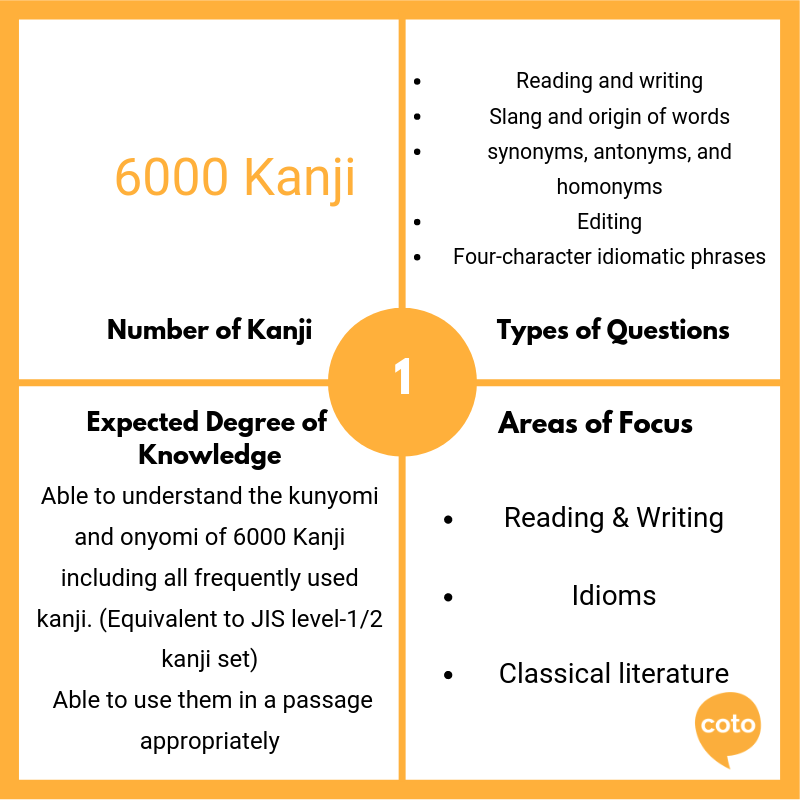
Grade 1 (University/General Public Level)
Detailed Areas of Focus
Reading and writing mastered reading and writing of the 6000 kanji and able to use them appropriately in a passage.
- Understand 熟語訓 (special kanji readings) and 当て字 (phonetic equivalents)
- Understand anonyms, synonyms, and homonyms
- Understand 国字
- Understand Kanji used to represent locations/nations
- Understand multiple Kanji Labels
Idioms – able to understand four-character idiomatic phrases and proverbs.
Classical Literature -able to understand kanji, Chinese characters from classical Japanese, Chinese literature.
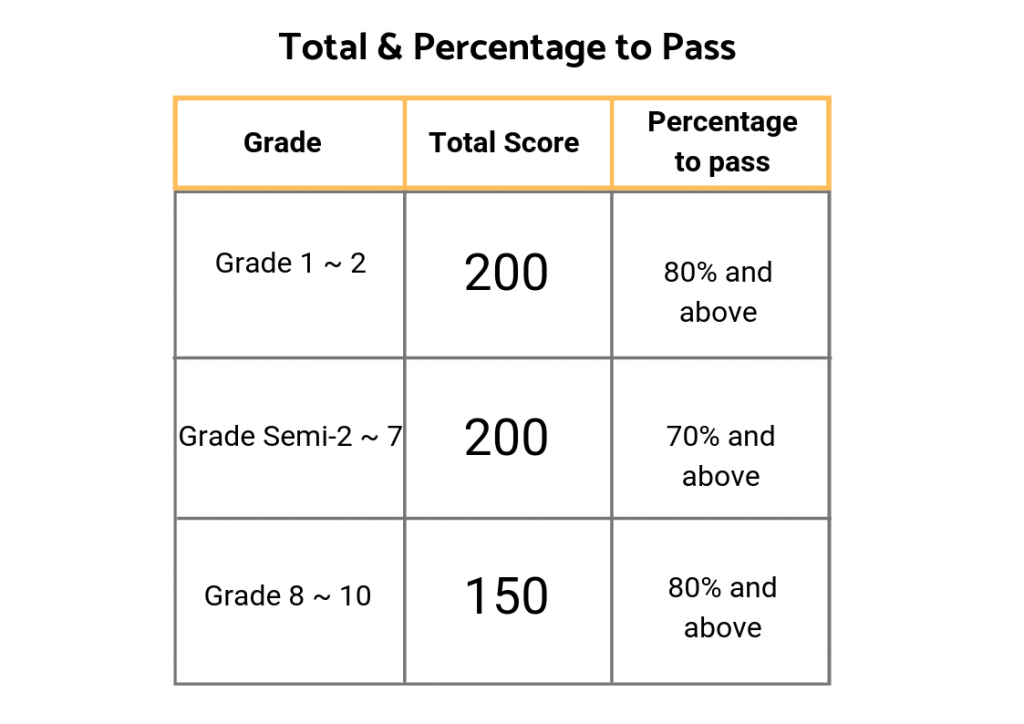
Total Scores and Percentage to Pass
Grade 1 ~ 2: 200 full score, pass for scoring 80% and above
Grade semi-2 ~ 7: 200 full score, pass for scoring 70% and above
Grade 8 ~ 10: 150 full score, pass for scoring 80% and above
How to register for the Kanken:
The paper test takes place 3 times in a year, usually in February, June, and October. Registration opens 3 months prior to the test. You can simply register for Kanken online through a few simple steps.
Click here to register for Kanken
If you wish to take any level from Level 7 to Level 2, you can also register for Kanken CBT (Computer Based Testing).
Few reasons why you should register for Kanken CBT
- It is Much more convenient. You will be sitting for Kanken on a computer at a test venue on the date chosen by yourself. There are more than 150 test venues in the country. Select the one most convenient for you.
- You will receive a physical certificate just like others taking the paper test.
- You will get notified your test result much faster. Your result slip will be mailed to you in about 10 days after the test
The registration for Kanken CBT can also be done online.
Click here for more registration information
Registration fee
The registration fees are as shown below.
Grade 8 – 10: 1500 yen
Grade 5 – 7: 2000 yen
Grade Semi-2 – 4: 2500 yen
Grade 2: 3500 yen
Grade Semi-1: 4500 yen
Grade 1: 5000 yen
Start taking Japanese lessons and master Kanji!

